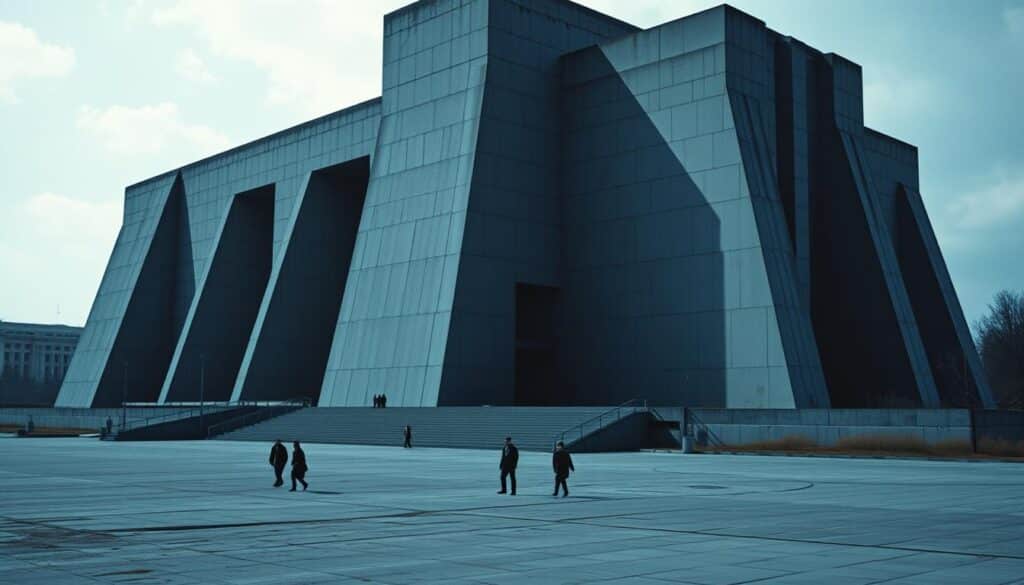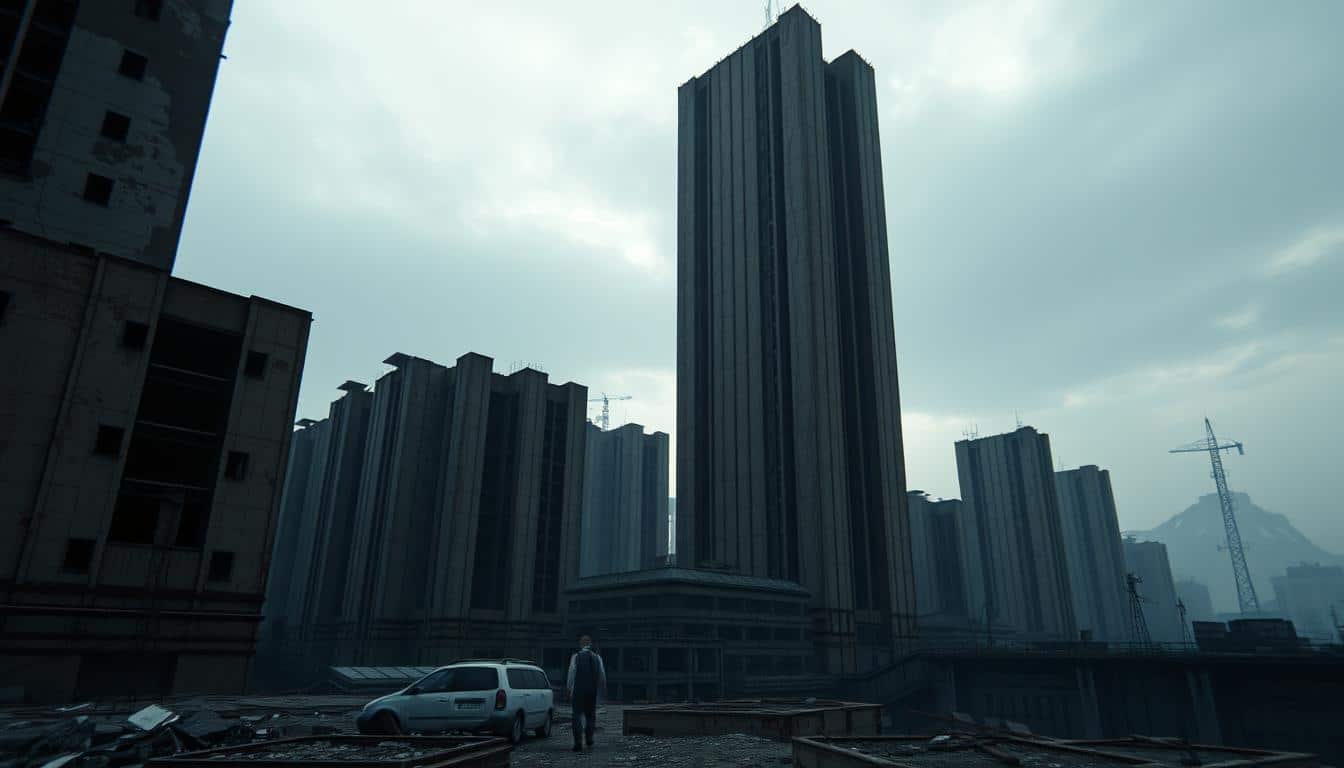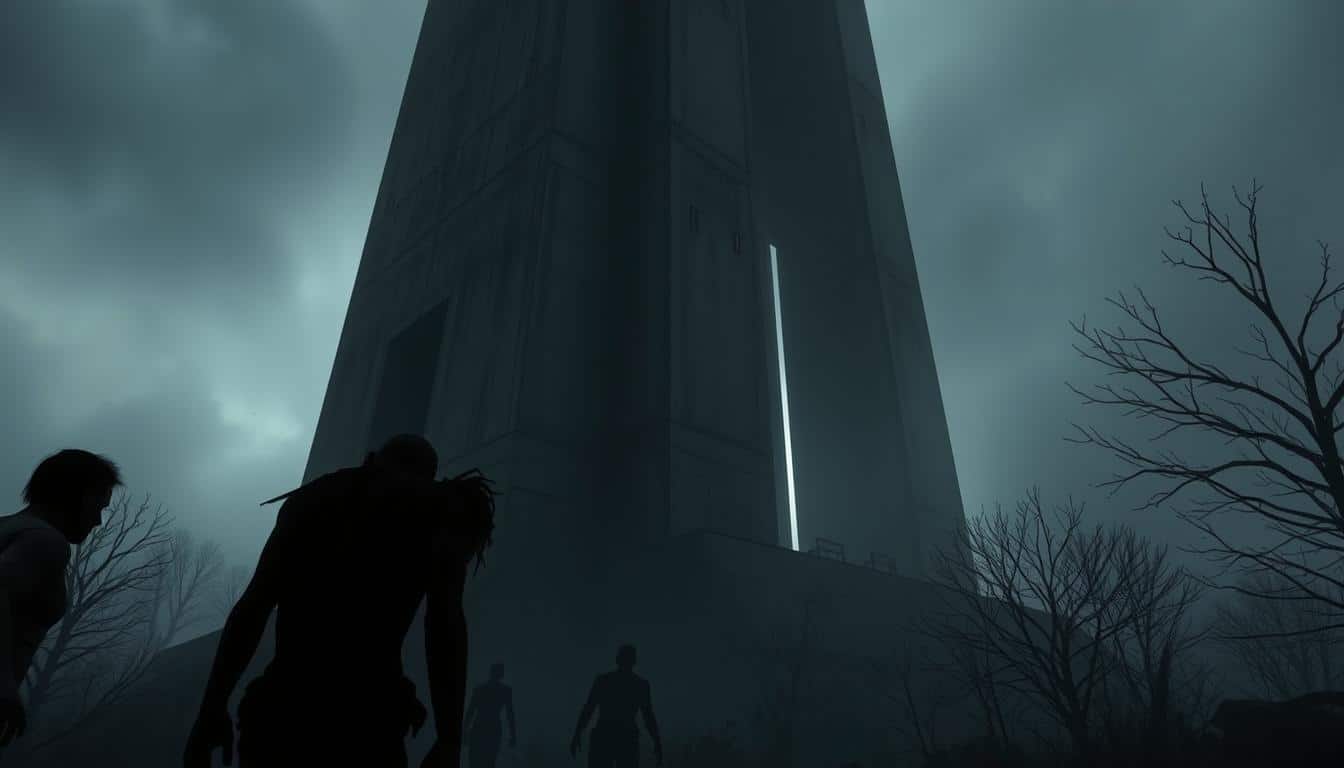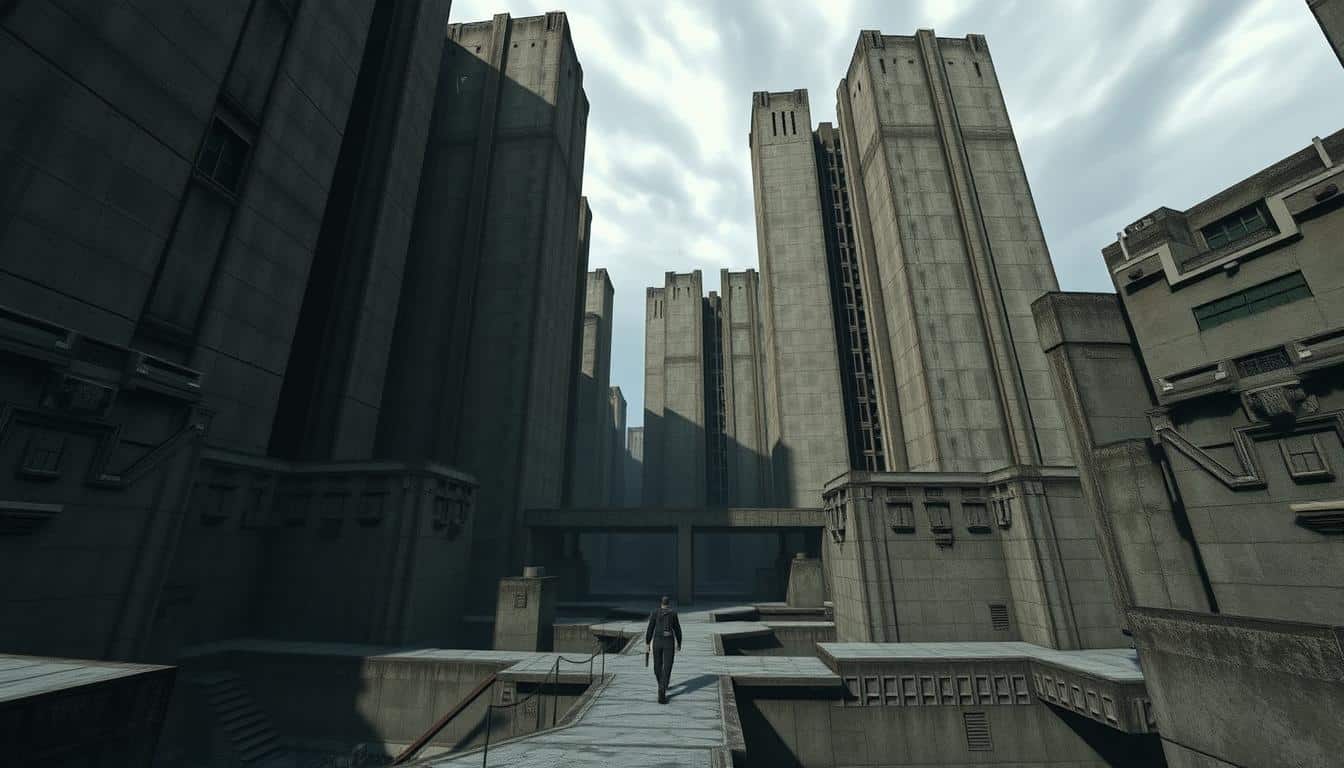Soviet Brutalism is known for its bold concrete buildings and grand designs. It became popular after World War II, focusing on being practical and affordable. It changed how buildings are made in eye-catching ways. The style now shapes the look and feel of many video games. Game makers use its grim and simple features to stir deep feelings and thoughts. They link the stark buildings to the player’s experience.
This article looks at how this special kind of architecture makes video games more visually and emotionally rich.
The Roots of Soviet Brutalism
Soviet Brutalism started in the late 1940s after World War II’s destruction. It was born from the need for cheap homes and public buildings. The Soviet Union wanted to fix its cities and help its people, leading to Soviet Brutalism.
This style liked to show off béton brut, or raw concrete. Using raw materials was key, giving buildings a simple, strong look. Architects stopped using fancy designs from earlier times. They chose a straightforward and bold style instead.
World War II’s impacts were huge in changing how buildings were made. Soviet Brutalism wasn’t just about new ways to build. It was a cultural shout for change. The style’s tough forms and bare materials showed strength, dreams, and a hope for a better future after tough times.

Characteristics of Brutalist Architecture
Brutalist architecture stands out with its bold and large buildings. It often uses raw concrete as the main material. The design focuses on being functional, putting the building’s strength first instead of fancy details.
Buildings have geometric shapes and look very solid, showing off their durability. The raw concrete adds to a rough feel, highlighting the materials’ natural look. The style is simple, using minimal design to shape its looks.
This simplicity brings out clean lines and strong shapes. It lets light and shadow play together, making interesting visuals.
The Transition from Architecture to Game Design
The journey from architecture to game design is truly captivating. It moved from real-world architecture into the vast worlds of video games. This change started getting attention with the unique look of Brutalist architecture. Game designers work to blend these physical traits with digital worlds’ endless possibilities.
Game design evolution is deeply tied to a common view between architects and game makers. They both value a balance of looks and usefulness. This connection lets them create spaces that draw players in more deeply. By adding architectural elements to games, they make places that feel real and impactful, just like Brutalist buildings do.
This mix of architecture and digital design connects real and virtual spaces in a new way. It lets players go through stories tied to the buildings around them. This creates a game experience that goes beyond just playing, making it more memorable.
Brutalism and Game Aesthetics
Brutalism’s entry into game design changes how players see and feel virtual worlds. Its raw simplicity makes for deep, immersive game experiences. Players face uneasy or unfamiliar feelings, diving deep into emotional journeys.
In games, Brutalist architecture shapes unique stories. Huge, stark buildings become key story symbols. They help explore dark themes, like dystopia, adding depth to the gaming experience.
Games that mix Brutalism and unique design stand out. They craft unforgettable worlds. Players dive into stories rich with human feelings and cultural ideas, making each game distinct and impactful.
Connecting Soviet Brutalism to Game Environments
The link between Soviet Brutalism and game settings shows how architecture shapes feelings. When games include Brutalist styles, they make a strong emotional impression. Players feel part of large, empty spaces that highlight loneliness and effort.
This bond is more than looks; it makes players dive deeper into their game worlds.
The Emotional Impact of Brutalist Design in Games
Brutalist architecture stands out with its simple, heavy concrete looks. It creates a mood that adds to the game’s emotional depth. Players move through big areas feeling alone. This setting helps show personal stories, leading to deep thoughts about one’s challenges and hopes.
Choosing Brutalist architecture makes the game story richer. It creates a special connection between the player and the game space.
Brutalism as a Metaphor in Game Narratives
In games, Brutalism is more than just a style; it’s a symbol of toughness and deep questions. The big, strong buildings represent the hurdles characters face. These aren’t just physical obstacles but signs of inner and mental battles.
This use of Brutalism lets players relate more, exploring big themes like fighting against tough odds. The design choice deepens the game, helping us get the motives of characters and how players feel.
Case Studies: Notable Games Incorporating Brutalist Elements
Gaming shows us how Brutalist design can deeply impact games. “Control” and “NaissanceE” are prime examples, blending architecture with storytelling. Through these games, we see architecture’s power in virtual worlds.
Examples from “Control” and its Architectural Symbolism
The game “Control” is unique because of the Oldest House. This brutalist building is more than just a backdrop. It’s a key part of the story. The architecture helps tell the game’s deep story. It represents themes of control, confusion, and power struggles. Players feel these themes as they move through the game’s space.
This makes the game’s atmosphere unforgettable to players. The design connects with players on a personal level, making the experience richer.
Exploring “NaissanceE”: A Journey through Brutalism
“NaissanceE” takes a different approach with Brutalism. It’s more abstract and surreal. The game creates a unique space for exploration and thought. It makes you feel small in a vast, alien world.
As you play, you deal with feelings of wonder and fear. The architecture in the game crafts these emotions. It ties the gameplay to the Brutalist design closely. This approach showcases Brutalism’s influence in game design.
The Influence of Brutalism on Level Design
Brutalism greatly impacts how video game levels are designed. It brings an imposing look that guides players and makes navigation easy. These Brutalist-inspired levels can stir up deep feelings. They mix a sense of greatness with being boxed in. This creates a special vibe that makes games more engaging.
Game designers borrow from Brutalist architecture in several ways:
- Rough textures that create a visceral feel
- Minimalist aesthetics focusing on form over embellishment
- Open spaces that challenge players’ sense of direction
These features make gameplay better by urging players to explore and interact. Designers tell stories through the environment, improving how players experience the game. They mix simplicity and complexity in the spaces players explore. This keeps level design exciting and deeply meaningful.
Criticism and Controversy Surrounding Brutalism in Gaming
The use of Brutalist architecture in video games has sparked considerable criticism of Brutalism. People often criticize its stark, cold look. They say it can make players feel unwelcome. The typical institutional look of Brutalist buildings might not work well in games. It can make players feel disconnected. This choice of architecture brings up interesting debates about design and player engagement.
Moreover, Soviet Brutalism’s history complicates its use in games. It’s often seen as a symbol of harsh government control. This adds depth to its representation in video games. Such connections lead to bigger debates in gaming. Developers have to balance being creative with thinking about the impact of their work. This means they need to tell stories that are aware of history but still pull players in.
Exploring Liminal Spaces in Brutalist Game Environments
Liminal spaces in brutalist game settings create an eerie, captivating mood. Gamers wander through big, often empty corridors and plain rooms. This encourages players to think about the importance of where they are.
The mix of Brutalism and undefined spaces makes players feel uneasy. Yet, it draws them in to explore more deeply.
These surroundings do more than just look interesting. They make the emotional journey of the game more intense. Players facing these spooky areas deal with topics of discovery and seeing things in new ways.
The blend of brutalist design and liminal concepts challenges how we see reality. It makes players rethink how they interact with the world in the game.
Conclusion
The impact of Soviet Brutalism on gaming is creating new stories. It combines visual styles with fun game play. Developers are using this bold architecture to make game worlds that pull players into their stories.
This art movement mixes history with future game design. Using big, bold structures and raw materials, game makers are triggering deep feelings. This makes games more engaging and interactive in new ways.
Soviet Brutalism in games is a strong tool for new stories. It’s exciting to think about how this will shape future games. As games grow, these design ideas will lead to even cooler gaming experiences.



